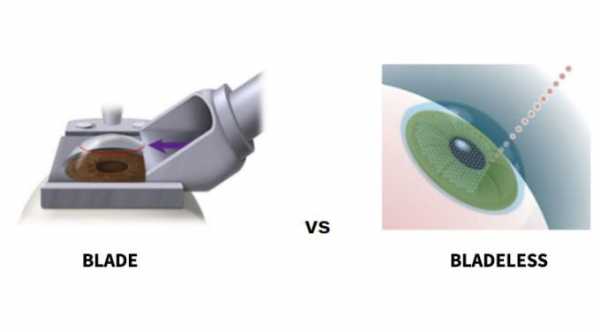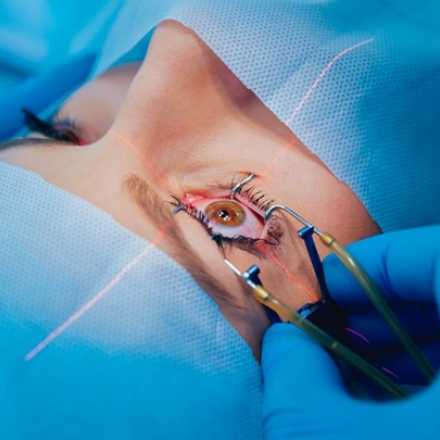
Blade vs. Bladeless LASIK Surgery
Almost every traditional method is now being replaced or supplemented with a more modern strategy. Laser technology as an example has replaced other tools and techniques in a lot of medical procedures. It’s even being used in cataract surgeries nowadays. But still, not everyone is adapting the transition. Why is that?
In LASIK, both blade and bladeless surgical technique is still in use. Let’s take a look at a brief comparison between the “blade” and “bladeless or all-laser” LASer-assisted In situ Keratomileusis (LASIK).
To get an overview, LASIK is a vision correction laser surgery that is performed by making a hinged flap into the cornea (clear membrane on the surface of the eye). The flap is then folded back by the surgeon and an excimer laser is used to reshape the cornea, giving the planned correction. The main difference between these 2 methods is the way the corneal flaps are made.
Blade – This is the traditional LASIK technique wherein an instrument called microkeratome is being used to cut the corneal tissue in order to make a flap.
Bladeless – This is an all-laser LASIK technique that uses a high-energy laser (femtosecond laser) to cut the corneal tissue to make the flap.
There were a couple of debates between surgeons practicing the 2 different methods; some in favor of the use of microkeratome, and some in favor of laser.
So let’s talk about the FLAPS.
Advantages of Microkeratome:
The suction pressure used to hold the eye is lesser when using a microkeratome which makes it more comfortable for patients. Suction time is shorter too, which takes about 3 seconds compared to the 15-20 seconds suction time for femto-laser. Because of these, the use of microkeratome can be advised to glaucoma patients planning to undergo LASIK surgery.
In some cases, such as a post-RK (radial keratotomy) patient, femto-laser is usually discouraged due to the presence of scars on the cornea which can interfere with laser flap creation. For these patients, microkeratome can be used.
Disadvantages of Microkeratome
The instrument is as good as the surgeon, which could mean an increased risk of having complications.
Meniscus flaps are created with microkeratomes, which means the flap is thinner in the middle. This puts a higher risk of having holes in the flap compared to the flap made with femto-laser where the center and outer edges are of the same thickness.
Advantages of Femtosecond Laser
It is easier to calculate and predict the flap with femtosecond laser. It means lesser risk for flap complications.
Femto-laser is also the method of choice for patients having irregular corneas.
Disadvantages of Femtosecond Laser
The use of high-energy laser to make the flap can contribute to corneal edema, causing a delay in vision recovery. It’s also a more expensive option.
Bottomline
One of the rare, but dreaded complications associated with LASIK are flap complications, which makes the 2 methods debatable. But do consider that flap complications can occur whether with the use of a microkeratome or a femto-laser. Complications arising from these 2 methods vary, but optimal vision correction can be achieved with either method.
There are certain cases wherein the use of modern-microkeratome can be more advantageous or effective than using femto-laser, and vice versa. These are options that can be discussed with your medical provider.






